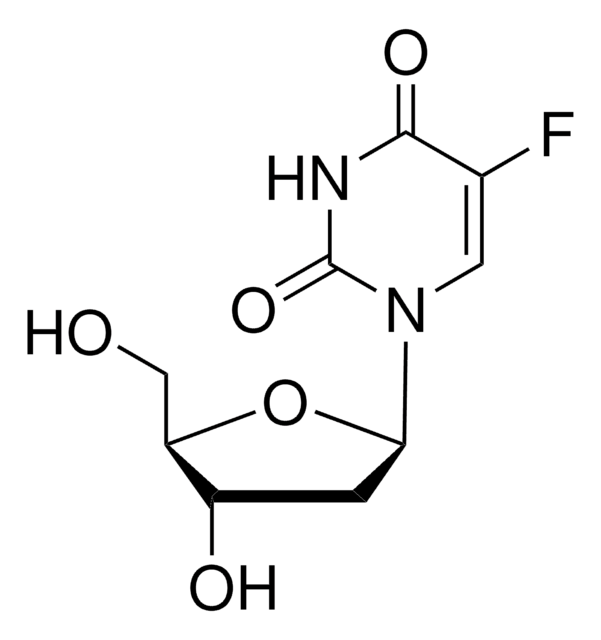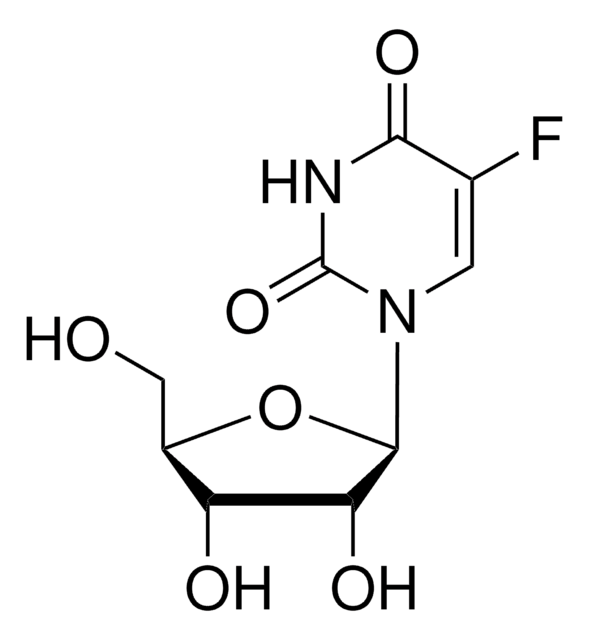F3503
5-Fluoro-2′-deoxyuridine 5′-monophosphate sodium salt
~85%
Synonym(s):
FdUMP
About This Item
Recommended Products
Assay
~85%
Quality Level
form
solid
storage temp.
−20°C
SMILES string
[Na].OC1CC(OC1COP(O)(O)=O)N2C=C(F)C(=O)NC2=O
InChI
1S/C9H12FN2O8P.Na.H/c10-4-2-12(9(15)11-8(4)14)7-1-5(13)6(20-7)3-19-21(16,17)18;;/h2,5-7,13H,1,3H2,(H,11,14,15)(H2,16,17,18);;
InChI key
DGEOOGBABXVZPJ-UHFFFAOYSA-N
General description
Application
- as an anti-mitotic agent for culturing mouse primary cortical neurons.
- as a component of feeding media in the culturing of mouse primary cortical neurons.
- in studies on the activity and function of thymidylate synthase (TS).
Biochem/physiol Actions
Signal Word
Warning
Hazard Statements
Precautionary Statements
Hazard Classifications
Acute Tox. 4 Dermal - Acute Tox. 4 Inhalation - Acute Tox. 4 Oral - Carc. 2
Storage Class Code
11 - Combustible Solids
WGK
WGK 3
Flash Point(F)
Not applicable
Flash Point(C)
Not applicable
Personal Protective Equipment
Regulatory Listings
Regulatory Listings are mainly provided for chemical products. Only limited information can be provided here for non-chemical products. No entry means none of the components are listed. It is the user’s obligation to ensure the safe and legal use of the product.
JAN Code
F3503-BULK:
F3503-5MG:
F3503-VAR:
F3503-25MG:
F3503-1MG:
Choose from one of the most recent versions:
Already Own This Product?
Find documentation for the products that you have recently purchased in the Document Library.
Customers Also Viewed
Our team of scientists has experience in all areas of research including Life Science, Material Science, Chemical Synthesis, Chromatography, Analytical and many others.
Contact Technical Service










